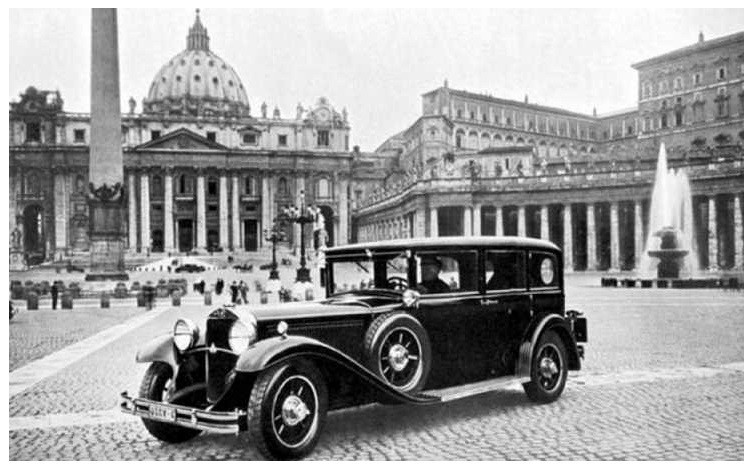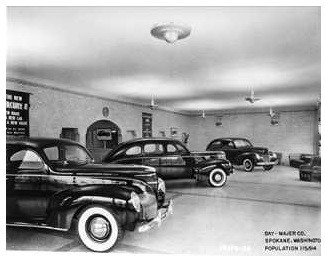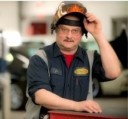U.S. Automotive History 101: The Innovative 1930s
 By the 1930s, more people were driving in the U.S. than ever, and cars were becoming more affordable for a larger percentage of the population. As manufacturing processes became more sophisticated, carmakers were able to produce cars at a higher rate, until the Great Depression slowed everything down for almost a full decade.
By the 1930s, more people were driving in the U.S. than ever, and cars were becoming more affordable for a larger percentage of the population. As manufacturing processes became more sophisticated, carmakers were able to produce cars at a higher rate, until the Great Depression slowed everything down for almost a full decade.
At Service King Carlson, fixing cars back to their pre-accident condition is our passion, so sharing some history about cars is a pleasure. Here in West Chester, there are classic cars from the 1930s featured at car shows throughout PA and all over the country, because people get nostalgic about their cars!
Here are some interesting facts about the innovative 1930s:
1) Cars in the 1930s first began featuring four-wheel hydraulic brakes. Low-pressure balloon tires replaced the old high-pressure tires, which made it a much less bumpy ride. During the 1930's most cars were also built with heaters and radios.
2) At this time, cars also began to incorporate aerodynamic elements in their designs, cutting down on wind resistance.
3) The 1930 Cadillac "V-16" became the first production car to offer a sixteen-cylinder engine and instantly sets a new norm for power, performance and luxury.
4) In the 1930s, a wide variety of carmakers started manufacturing more intricate designs and beautiful vehicles -- especially those who lived in opulence during the Great Depression. The luxury cars from this period saw the implementation of new manufacturing techniques, new inventions (e.g., the automatic transmission), new engines (e.g., the V-8, the V-12, and the V-16), in addition to the rise of new automotive stylists like Harley Earl.
5) Annual production of automobiles slumped from the 1929 peak of 5.3 million units in the U.S. in 1929 to just under 2.4 million in 1930. Life expectancy for an the tires on a typical automobile had risen to 2.5 years.
6) Fuel consumption for automobiles in the U.S. averaged almost 600 gallons of gasoline annually.
7) The U.S. boasted 830,000 miles of paved highways. U.S. motorists racked up 216 billion miles in their fleet of 26 million registered motor vehicles. 
8) Oklahoma City, Oklahoma, became the first city in the world to install parking meters in 1935.
9) Cumulative sales for U.S. automakers (since 1900) passed 50 million units. There was one car for every five Americans by 1936.
10) The United Automobile Workers Union formed in 1935.
11) The U.S. automobile industry still suffered from the Depression and reported production of just 2.5 million units.
- 12) In the 1930s, American cars started looking cool, with streamlined designs and viewed as pieces of moving art. In the 20s, most cars were constructed on a basic carriage-like chassis rolling on wood-spoke wheels and solid tires, but in 1932 those things changed dramatically.
The 1930s influenced our modern cars in so many ways that we still see many nuances and innovations from that decade today. The Great Depression undoubtedly slowed down the evolution of cars in the U.S., but through innovation, we still saw an emergence of technology and work. The 1930s was an amazing time in our country's history of automotive transportation, and it produced some of the world's greatest car designers and manufacturers.
Sources: Wikipedia, US Car History and Anything About Cars










 By the 1930s, more people were driving in the U.S. than ever, and cars were becoming more affordable for a larger percentage of the population. As manufacturing processes became more sophisticated, carmakers were able to produce cars at a higher rate, until the Great Depression slowed everything down for almost a full decade.
By the 1930s, more people were driving in the U.S. than ever, and cars were becoming more affordable for a larger percentage of the population. As manufacturing processes became more sophisticated, carmakers were able to produce cars at a higher rate, until the Great Depression slowed everything down for almost a full decade.
Social